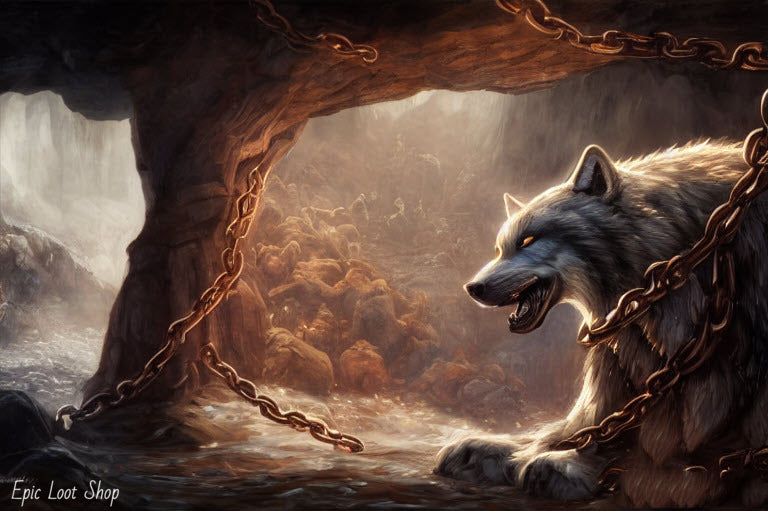The Binding Of Fenrir
Nestled within the shadowy marshes of Norse mythology, the monstrous wolf Fenrir, begotten by the trickster god Loki and his formidable consort, the giantess Angrboda, is found. "Fenris," as he is named in Old Norse, translates to the "fen-dweller", a creature of such size and might that even the gods trembled in his presence. Containing the beast as he grew colossal proved to be a Herculean task [1].
A Story of Deception and Confinement
In the annals of Norse mythology, Fenrir stands as a formidable figure, foretold to bring about Odin's downfall at Ragnarok [1]. The prodigy of Loki, Fenrir possesses supernatural strength and speed, and shares his lineage with the World Serpent Jormungandr and the giantess Angrboda [2].
The tale of Fenrir's binding illuminates the gods' recognition of the wolf's potential for destruction should he escape his chains. Consequently, they dedicate enormous efforts to ensure Fenrir's captivity, while they brace for the prophesied Ragnarok [2].
Fenrir's Imprisonment
Within the revered Prose Edda, there exist two accounts of Fenrir's confinement. Both suggest a long-term captivity, with one story found in Gylfaginning providing no specific duration. However, the narrative from Skáldskaparmál suggests Fenrir would remain "bound until the time of Ragnarök." [3]
The Site of Binding
In the verdant plains of Vanaheim, the gods chained Fenrir. His shackles consisted of six impossible elements: the murmur of a cat's tread, a woman's beard, mountain roots, the breath of a fish, bird spittle, and a woman's spindle. These elements, brought together by the hands of the four dwarves, fashioned the chains [3].
Fenrir's Size and the Feeder
Fenrir's size fluctuates in various depictions. At times, he appears horse-sized; at others, he is monstrous enough to consume the sun. His enormous head, penetrating gaze, and sweeping tail, which touched both heaven and earth, inspire awe and fear. His vast jaws, the upper reaching the heavens while the lower extending to Niflheim, and the prophecy that no fetter could contain him further accentuate his formidable stature [3].
Fenrir: The Uncontainable
Symbolically, Fenrir represents the struggle between the need for security and the necessity of freedom. He symbolizes the uncontrollable, a being of immense power, paradoxically chained. Just as letting a loved one embark on their journey can be challenging, the gods had to bind Fenrir for the greater good, despite their affection for him. The Fenrir symbol, while evoking strong emotions, emphasizes the need for individual growth and self-reliance, serving as a poignant reminder of the complexities of relationships [4, 5].
Sources:
[1] McCoy, D. (2012). The Vikings. Penguin UK. [2] Orchard, A. (1997). Dictionary of Norse Myth and Legend. Cassell. [3] Sturluson, S., & Brodeur, A. G. (1916). The Prose Edda. The American-Scandinavian Foundation. [4] Lindow, J. (2001). Norse Mythology: A Guide to Gods, Heroes, Rituals, and Beliefs. Oxford University Press. [5] Turville-Petre, E. (1964). Myth and Religion of the North: The Religion of Ancient Scandinavia. Weidenfeld and Nicolson.






Laissez un commentaire